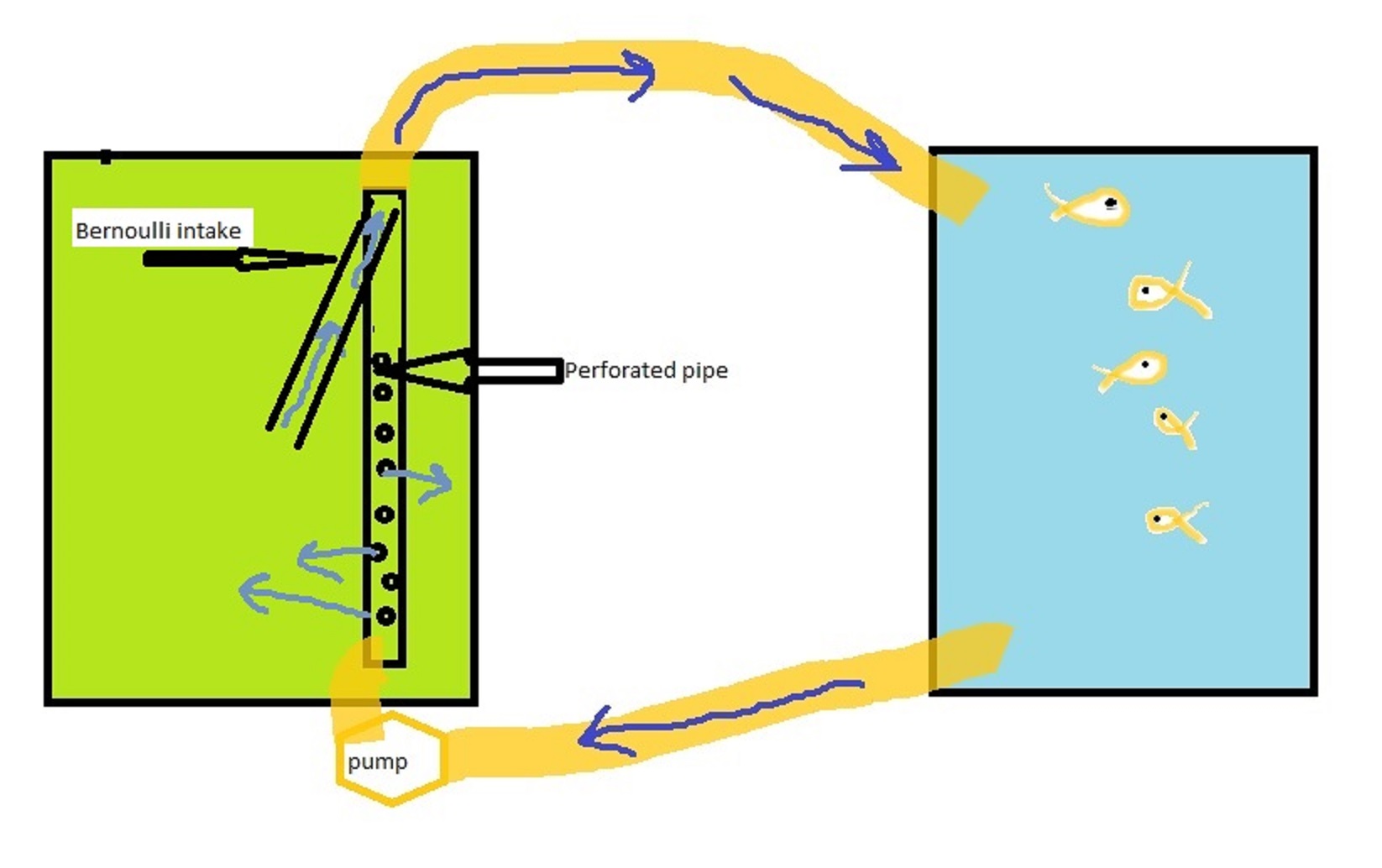I am setting up an aquaponics system. There is one large basin for plants (left) and one large basin for fish (right). The basin for plants is filled with rocks and is about 2" higher than the fish basin, filled with water. A pump delivers water from the fish basin though a pipe with an outlet buried under the rocks of the plant basin, supplying nutrients from the fish waste to the plants.
The black items show the pump that pulls water and moves it to the plant basin.
Normally I'd have a simple pipe return the water by gravity back to the fish basin (pipe shown in purple). The problem I have, is due to some other conditions, the two basins are located 20 ft apart, and the space between the two basins is the only walkway to another area of the garden.
I think maybe a drain pipe can then snake back, but I don't know if it is physically possible for the water to return as shown (in green). The return water must equal the amount pumped. I'm concerned any such configuration like shown in green either won't work, or might cause a siphon effect that doesn't flow at the same rate as the pump that adds water.
I want to avoid drilling holes in the basins, as that introduces the risk of a leak and insurance costs or lawsuits from neighbors. I'll only choose this option if a way without involving holes if impossible.
How can I plumb this so water returns back to the fish basin in an equal amount to that pumped, without obstructing the 20 ft space between the two basins?






